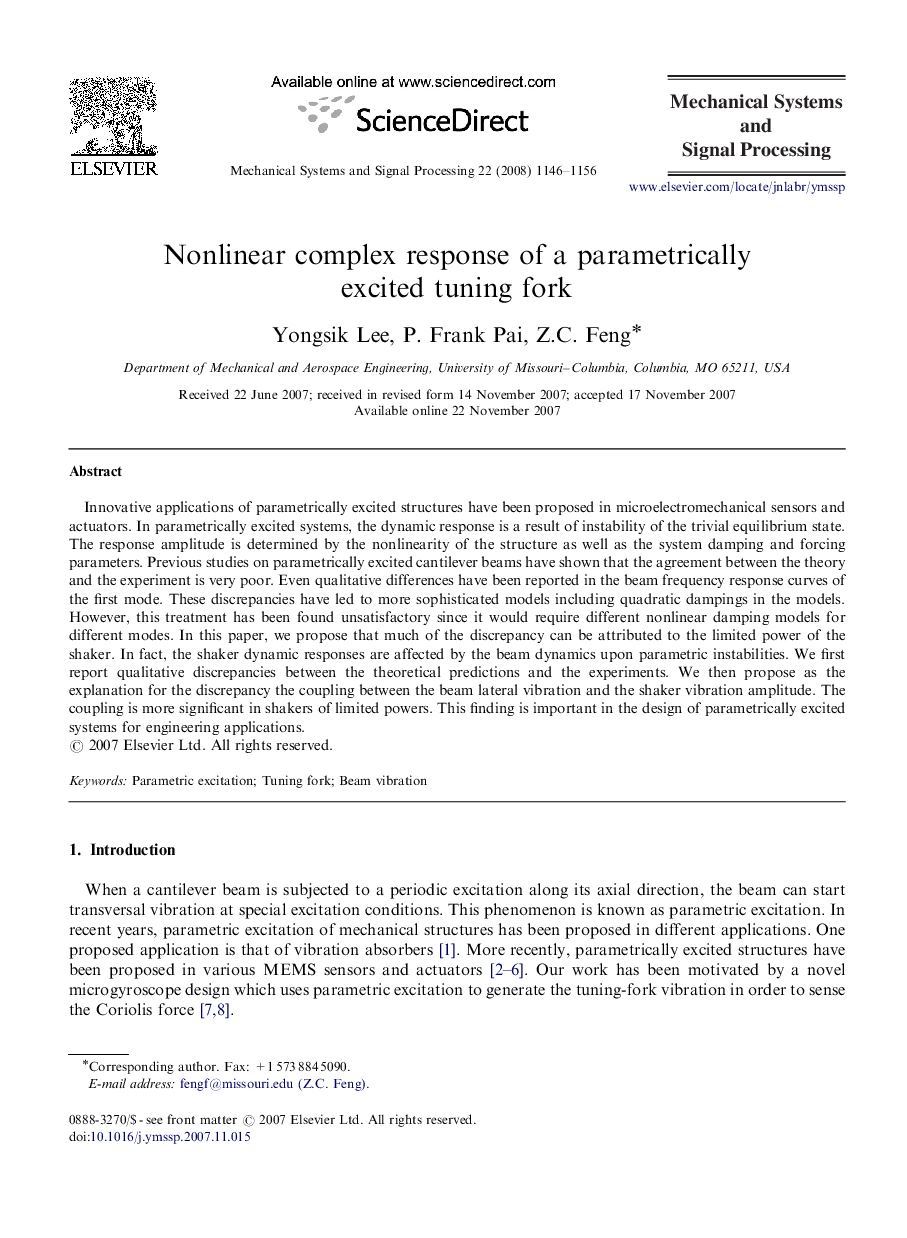| Article ID | Journal | Published Year | Pages | File Type |
|---|---|---|---|---|
| 559882 | Mechanical Systems and Signal Processing | 2008 | 11 Pages |
Innovative applications of parametrically excited structures have been proposed in microelectromechanical sensors and actuators. In parametrically excited systems, the dynamic response is a result of instability of the trivial equilibrium state. The response amplitude is determined by the nonlinearity of the structure as well as the system damping and forcing parameters. Previous studies on parametrically excited cantilever beams have shown that the agreement between the theory and the experiment is very poor. Even qualitative differences have been reported in the beam frequency response curves of the first mode. These discrepancies have led to more sophisticated models including quadratic dampings in the models. However, this treatment has been found unsatisfactory since it would require different nonlinear damping models for different modes. In this paper, we propose that much of the discrepancy can be attributed to the limited power of the shaker. In fact, the shaker dynamic responses are affected by the beam dynamics upon parametric instabilities. We first report qualitative discrepancies between the theoretical predictions and the experiments. We then propose as the explanation for the discrepancy the coupling between the beam lateral vibration and the shaker vibration amplitude. The coupling is more significant in shakers of limited powers. This finding is important in the design of parametrically excited systems for engineering applications.
